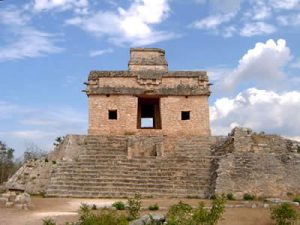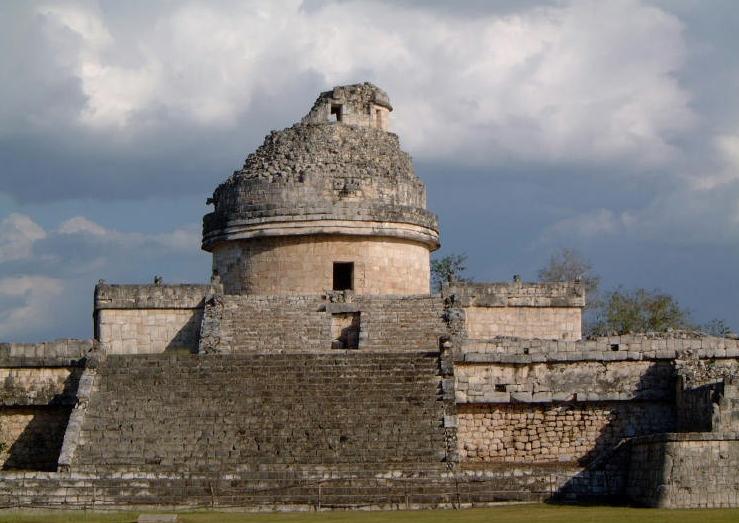MERIDA, Yuc.- (NOTIMEX)
On December 21, various Mayan ceremonial centers will stage the archaeoastronomy (the study of how people in the past have understood the the sky) “light and shadow” phenomena generated by the sun, on the called “winter solstice” reported Yucatecan astronomer Eddie Salazar Gamboa a professor in the Merida Institute of Technology (ITM)
He indicated that the next day 21 of December also befall two significant events like the longest night of the year and the maximum displacement of the sun to the south. He recalled that in late fall and early winter, various phenomena of light and shadow will be seeing in many of the pre-Columbian structures of Chichén Itzá, Dzibilchaltún, Mayapan, and Uxmal.
“We refer to at least five Mayan cities of Yucatan where there are buildings aligned with the exact position of the sun at this time of year, but few people know, because it is not disclosed, and thus, tourism goes, it is not completely appreciated” he stressed. -One of these sites is the “Temple of the Seven Dolls” in Dzibilchaltún, where the sun coming out to the east, at a certain point in their ascent, its rays penetrate the top of the temple and illuminates everything inside, a phenomenon discovered by archaeologist Victor Segovia Pinto.-
Moreover, in Chichen Itza Castle, in the winter solstice afternoon, various phenomena associated with the Sun and Moon will be possible to witness such as on its south and west sides will de illuminated while the northern and east part will remain in shadows.
-“In the summer solstice, the northern and eastern sides are illuminated, only that the phenomenon is seen at sunrise,”- Yucatecan astronomer Eddie Salazar Gamboa explained. -In the case of Uxmal, it is possible to appreciate the “Palomar”, in the winter solstice, also seen in El Caracol in Chichen Itza, in the pyramid of Mayapan and in the “False Arch” in Oxkintok.-
THE LONGEST NIGHT
Salazar Gamboa said that on Sunday 21, at 17:02 hours, the Earth will be inclined over 23 degrees, a phenomenon that will be appreciated from space. Therefore, from the ground, the longest night of the year will be recorded and the sun will have its maximum declination south of where it will remain for about three days and then begin its journey eastward.
This day, the “Sun stops” it cannot get closer to the south, so it is practically in the same place for three days. The longest night of the year is recorded, lasting 13 hours and nine minutes, while the day is 10 hours and 51 minutes, moreover, the sun will rise at 6:31 am and will set at 17:22 hours, entering the moon is in its new phase.
According to Mayan beliefs “light is reborn”, it is from this date, when day length tends to increase over night, so that in antiquity the definition of this phenomena was called ” Invictus Sun”.






